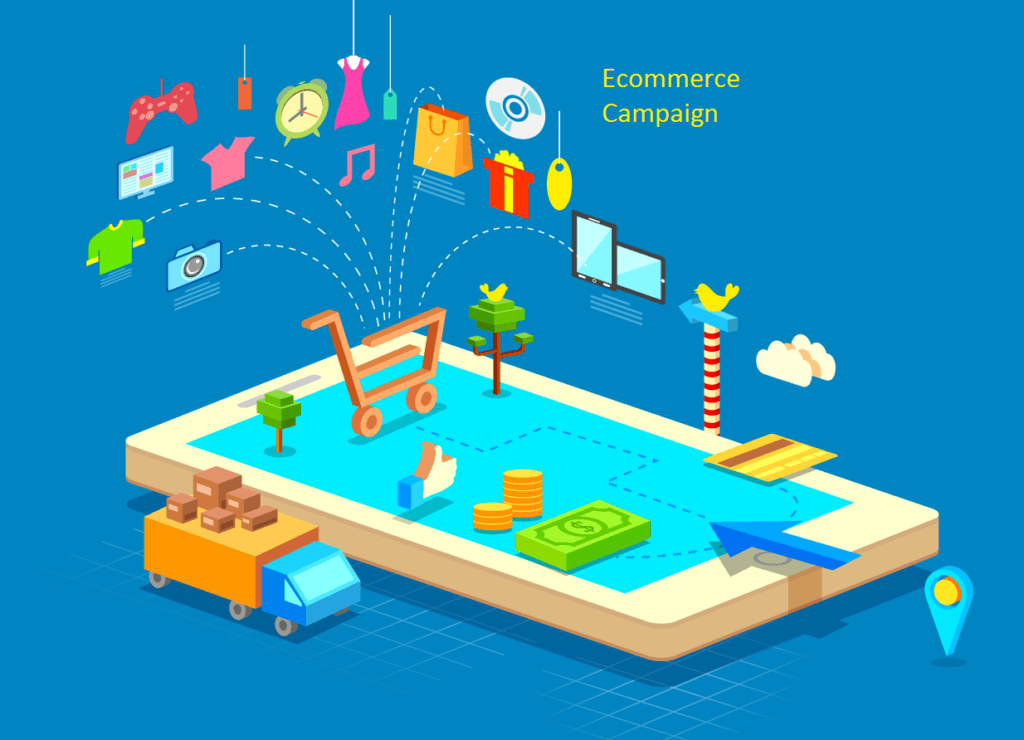
Ecommerce is obviously the most competitive and challenging verticals in SEM today. Regardless of the industry you’re in, you’ll be competing against huge companies like Amazon and other big-time businesses who focus on your niche, too. It’s got many smaller businesses living under constant fear with their startups.
With more competition and businesses investing in Shopping ads, it’s time to think ahead and adopt advanced strategies to stay on top of the game. What can you do to start becoming even better? Read on as I show you five useful PPC tips to run your Ecommerce campaign successfully!
5 PPC Tips to Run Your Ecommerce Campaign Successfully

Online shopping won’t go anywhere anytime soon and it’s time to take advantage of it! With different forms of advertising online, whatever you may be doing now can be improved. Follow these five simple yet effective tips for the best results:
1.Where Should You Advertise?
There are a host of options on where to advertise, with a lot of PPC ecommerce brand options to choose from. The two most popular platforms which continue to grow are Amazon Advertising and Google Merchant Center, which you should consider using.
After all, Google shopping ads continue to grow, while Amazon also has great benefits if you can host your products on the platform.
In fact, a recent report shows that investing in Amazon accounted for almost 50% for online revenue, while Amazon itself accounted for over 50% of online sales growth, both within the US. Because of this success, Google took notice and they’re now testing on running Amazon shopping ads on their search engines.
So it’s about high time that you start advertising with the RIGHT platforms to grow!
2. Constantly Update Your Shopping Feeds
With this particular tip, I’ll focus more on Google Merchant Center, a platform that uses shopping feeds to gather information for AdWords ecommerce campaigns. To use it, you need to have Google AdWords and Google Merchant Center accounts connected. When linking these two accounts, it allows you to advertise all products in forms of shopping ads from AdWords.
Your shopping feed in the center is what Google uses to advertise products. The AdWords Product Listing Ads will collect product information from the shopping feed. However, you need to be very careful about updating or changing your shopping feeds. If you don’t keep updated or adapt to their changing policies, you may end up with a warning or data suspension.
3. Set Up the PROPER Ecommerce Tracking
This is a crucial step that many ecommerce companies tend to overlook. If you want to track revenue generated from PPC ecommerce campaigns, you need to have a good tracking software for it. So long as all your shopping feeds are updated properly, tracking software while show you everything you need to know, from what you’re selling, the revenue you make, where the sales come from and more.
That way, you can optimize and adjust your campaigns according to the results. It’s easier to track it with software that shows specific analytics than loosely basing your campaigns on the sales you make without monitoring your ads. You’ll know what you’re doing wrong and what you should continue doing!
4. Optimize All Your Shopping Ads
There are many things you can do to optimize shopping ads, such as:
- Diversify the ads you use for ecommerce, using product listings and text ads together to highlight specifications while staying in the competition
- Identify the way you should structure all your shopping campaigns, which depends on what you sell. It might be better to break your campaigns down by brand name or category, testing different structures first to see which one can generate more sales in a cost-effective manner
- You should add negative keywords to shopping campaigns, which have you bid higher and prevent any unwanted traffic from searches
- Consider creating ad extensions, like structured snippers, which showcases specific types or styles of products and brands
- Review all price extensions for you can highlight the competitive prices
5. Always Stay Competitive and Focus on Content, Too
Even in advertising, you need to make sure that you focus on creating quality content for it. Excite people into purchasing your products and entice them to click on your ad. If they do select your ad, lead them to an enticing and navigable landing page which includes all information, as well as engaging photos, reviews, and videos.
And lastly, make sure that you’re always updated with current trends and to keep an eye on what other competitors are currently doing. Prices can abruptly change, policies start to adjust, and if you don’t move quickly, sales can shift to someone else! So always keep your eyes open for what’s in and what the competition does with their own campaigns.
Wrapping It Up
With more and more people shopping online, it’s time to start rethinking your advertising campaigns. With proper PPC eCommerce campaigns, you can take advantage of the growing number of buyers and reach your goals! Whether you do it on your own or get help from Toowoomba’s SEO Expert, be sure to follow the right tips.
I hope this article on PPC ecommerce Campaigns gave you an idea of where to start! So don’t wait any longer and implement any of these tips to your advertising efforts now.